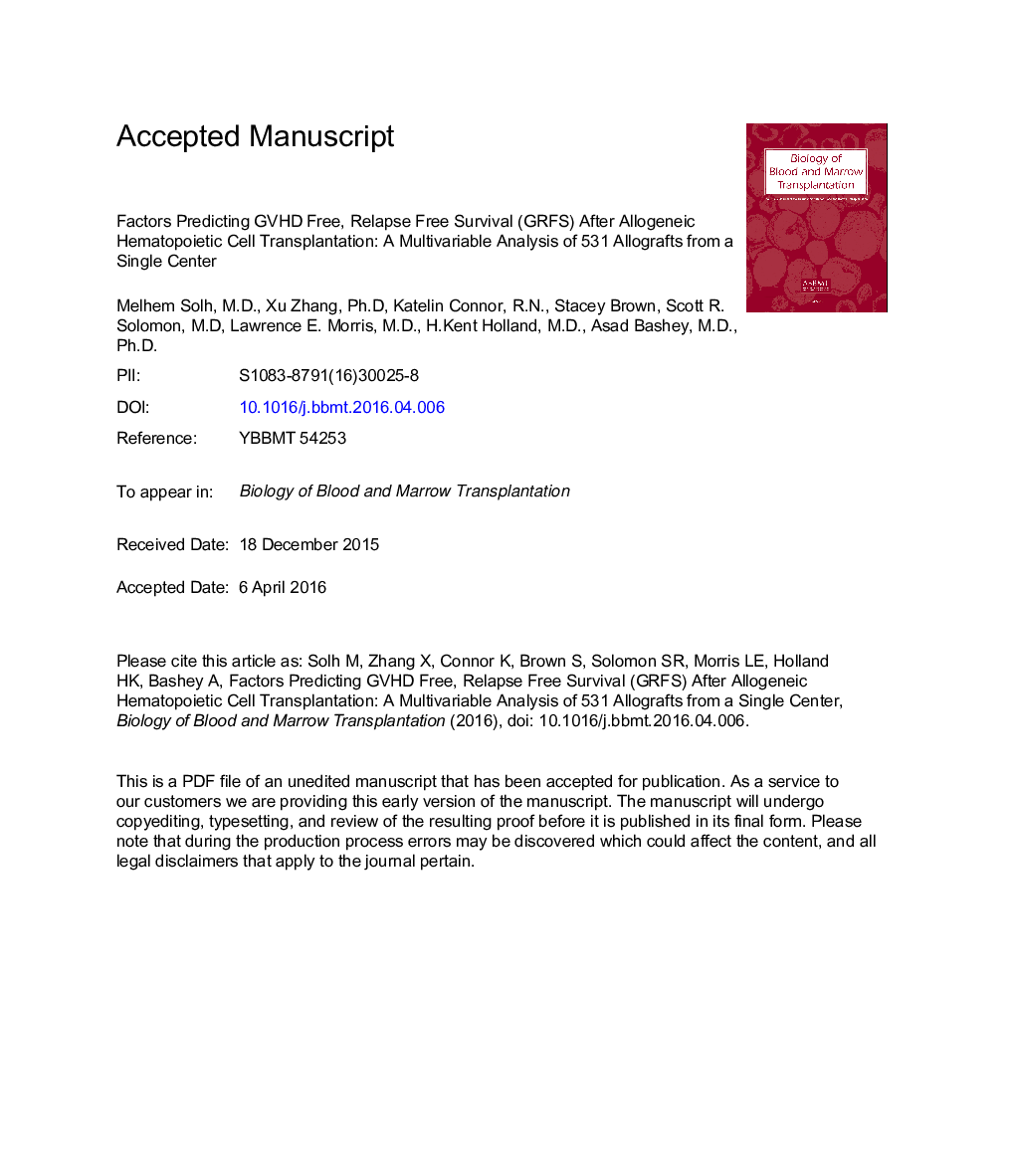| Article ID | Journal | Published Year | Pages | File Type |
|---|---|---|---|---|
| 8430837 | Biology of Blood and Marrow Transplantation | 2016 | 28 Pages |
Abstract
The ideal outcome of allogeneic hematopoietic cell transplantation (allo-HCT) is based on survival that is free of morbidity. The most common causes of treatment failure and morbidity after HCT are relapse, graft-versus-host disease (GVHD), and nonrelapse death. A composite endpoint that measures survival free of clinically significant negative events may be a useful way to determine the success of allo-HCT. We assessed GVHD and relapse-free survival (GRFS) where the events were acute GVHD grades III to IV, chronic GVHD requiring immunosuppression, relapse, or death in 531 consecutive adult patients who received an allo-HCT between 2006 and 2014 at our center. Median follow-up of living patients was 46 months (range, 12 to 123). HLA matched related donor (MRD, n = 198, 37%), matched unrelated donor (MUD, n = 205, 39%), and haploidentical donor with post-transplant cyclophosphamide (HID, n = 128, 24%) were used. Thirty-six percent of patients had a high/very-high Dana Farber disease risk index (DRI). Estimated rates of GRFS at 1 and 2 years after MRD, MUD, and HID transplantations were 34% and 26%, 26% and 17%, and 33% and 31%, respectively, with MRD recipients having a better GRFS than MUD (P < .05). On multivariable analysis, peripheral blood stem cell source (HR, 1.34; P = .04), MUD (HR, 1.41; P = .003), and high/very high DRI (HR, 1.66; P = .001) were all associated with a worse GFRS post-HCT. These data suggest that GRFS can be predicted by patient disease risk, stem cell source, and donor type. Importantly, MUDs produce inferior GRFS to MRDs, whereas HIDs do not.
Keywords
Related Topics
Life Sciences
Biochemistry, Genetics and Molecular Biology
Cancer Research
Authors
Melhem Solh, Xu Zhang, Katelin Connor, Stacey Brown, Scott R. Solomon, Lawrence E. Morris, H. Kent Holland, Asad Bashey,
